Exhibit 99.6


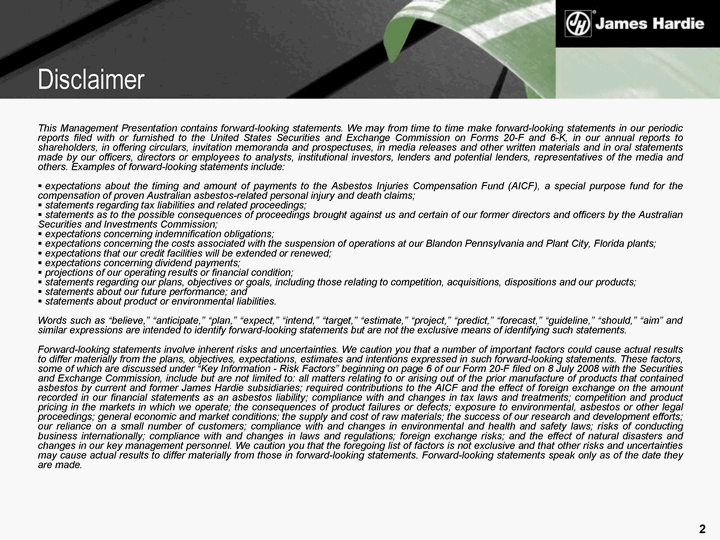
| This Management Presentation contains forward-looking statements. We may from time to time make forward-looking statements in our periodic reports filed with or furnished to the United States Securities and Exchange Commission on Forms 20-F and 6-K, in our annual reports to shareholders, in offering circulars, invitation memoranda and prospectuses, in media releases and other written materials and in oral statements made by our officers, directors or employees to analysts, institutional investors, lenders and potential lenders, representatives of the media and others. Examples of forward-looking statements include: expectations about the timing and amount of payments to the Asbestos Injuries Compensation Fund (AICF), a special purpose fund for the compensation of proven Australian asbestos-related personal injury and death claims; statements regarding tax liabilities and related proceedings; statements as to the possible consequences of proceedings brought against us and certain of our former directors and officers by the Australian Securities and Investments Commission; expectations concerning indemnification obligations; expectations concerning the costs associated with the suspension of operations at our Blandon Pennsylvania and Plant City, Florida plants; expectations that our credit facilities will be extended or renewed; expectations concerning dividend payments; projections of our operating results or financial condition; statements regarding our plans, objectives or goals, including those relating to competition, acquisitions, dispositions and our products; statements about our future performance; and statements about product or environmental liabilities. Words such as "believe," "anticipate," "plan," "expect," "intend," "target," "estimate," "project," "predict," "forecast," "guideline," "should," "aim" and similar expressions are intended to identify forward-looking statements but are not the exclusive means of identifying such statements. Forward-looking statements involve inherent risks and uncertainties. We caution you that a number of important factors could cause actual results to differ materially from the plans, objectives, expectations, estimates and intentions expressed in such forward-looking statements. These factors, some of which are discussed under "Key Information - Risk Factors" beginning on page 6 of our Form 20-F filed on 8 July 2008 with the Securities and Exchange Commission, include but are not limited to: all matters relating to or arising out of the prior manufacture of products that contained asbestos by current and former James Hardie subsidiaries; required contributions to the AICF and the effect of foreign exchange on the amount recorded in our financial statements as an asbestos liability; compliance with and changes in tax laws and treatments; competition and product pricing in the markets in which we operate; the consequences of product failures or defects; exposure to environmental, asbestos or other legal proceedings; general economic and market conditions; the supply and cost of raw materials; the success of our research and development efforts; our reliance on a small number of customers; compliance with and changes in environmental and health and safety laws; risks of conducting business internationally; compliance with and changes in laws and regulations; foreign exchange risks; and the effect of natural disasters and changes in our key management personnel. We caution you that the foregoing list of factors is not exclusive and that other risks and uncertainties may cause actual results to differ materially from those in forward-looking statements. Forward-looking statements speak only as of the date they are made. Disclaimer |
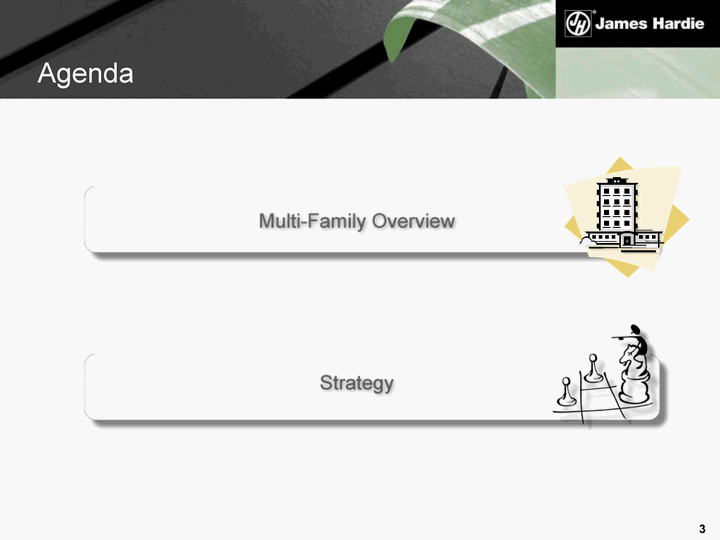
| Agenda Multi-Family Overview Strategy |
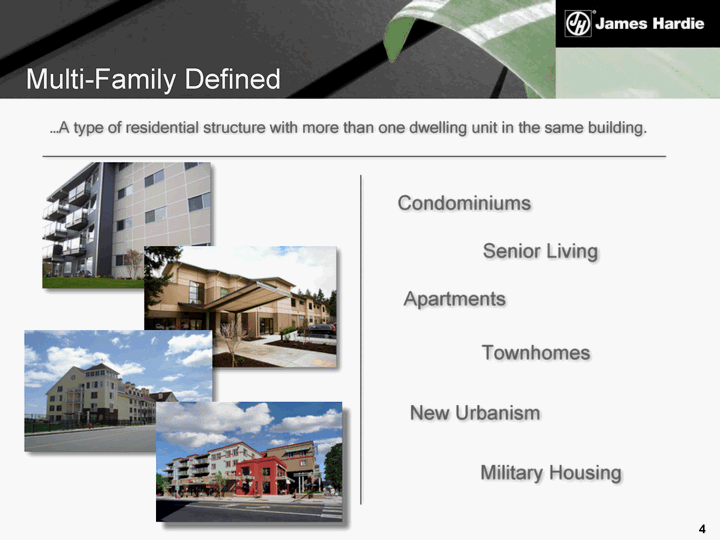
| Multi-Family Defined New Urbanism Military Housing Apartments Townhomes Condominiums Senior Living ....A type of residential structure with more than one dwelling unit in the same building. |
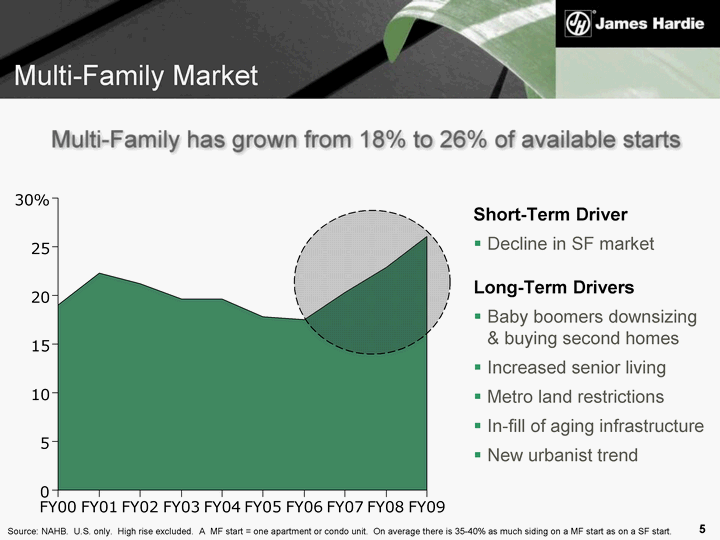
| Multi-Family Market Multi-Family has grown from 18% to 26% of available starts Short-Term Driver Decline in SF market Long-Term Drivers Baby boomers downsizing & buying second homes Increased senior living Metro land restrictions In-fill of aging infrastructure New urbanist trend Source: NAHB. U.S. only. High rise excluded. A MF start = one apartment or condo unit. On average there is 35-40% as much siding on a MF start as on a SF start. FY00 FY01 FY02 FY03 FY04 FY05 FY06 FY07 FY08 FY09 0 5 10 15 20 25 30% |
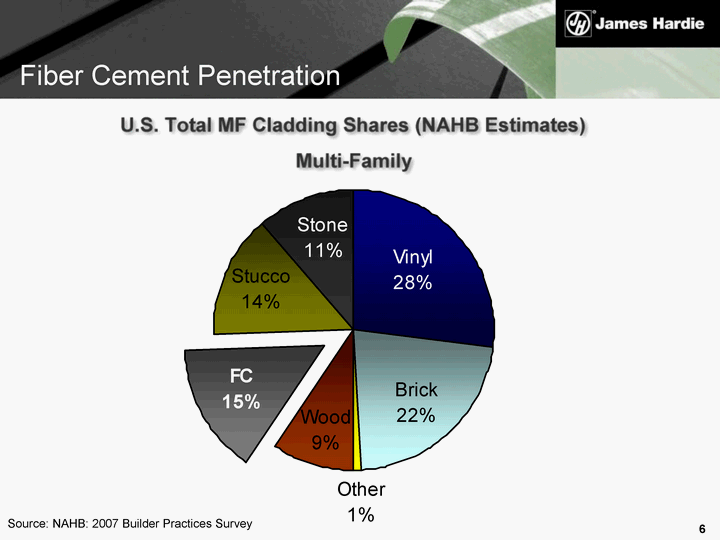
| Source: NAHB: 2007 Builder Practices Survey U.S. Total MF Cladding Shares (NAHB Estimates) Multi-Family Fiber Cement Penetration |
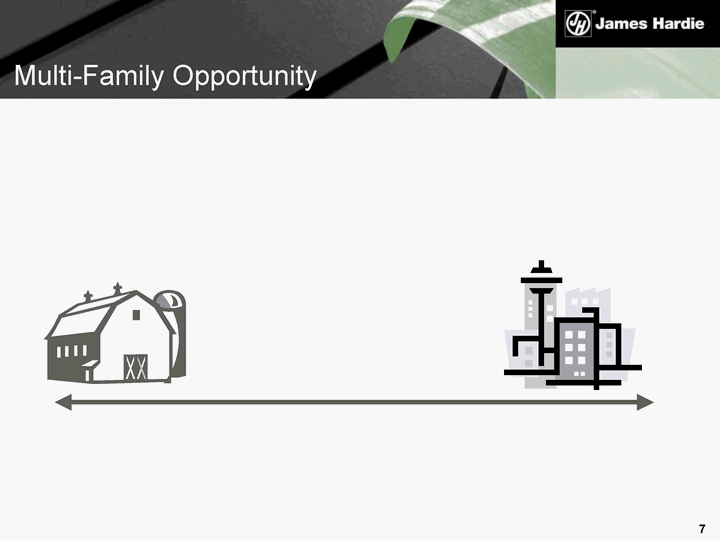
| Multi-Family Opportunity |

| Concentration: Percent of MF Units With Top 50 Players Source: Developers (% of units developed): Multifamily Executive 2007. Property Managers (% of units in MF buildings with 5+ units): Nat'l Multi-Housing Council (apts only) Developers Property Managers Multi-Family Customer |
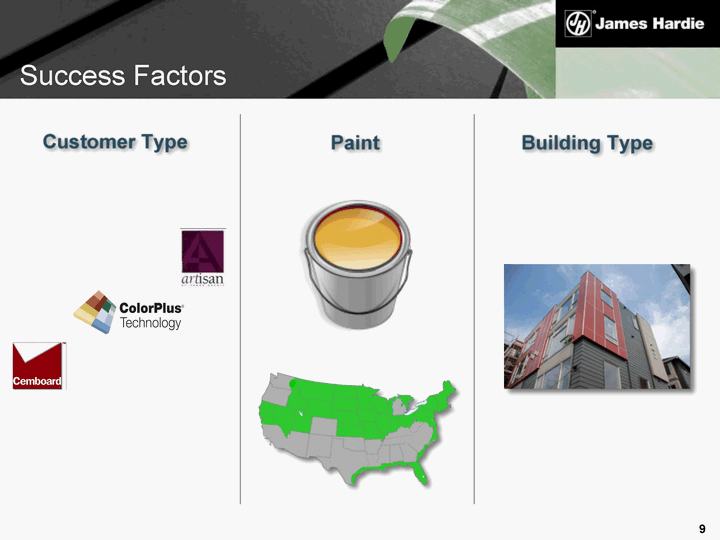
| Success Factors Customer Type Paint Building Type |

| Multi-Family Overview Strategy |

| Leverage Portfolio Disciplined Execution Enable Greater Short-Term Volume Launch New Panel Solutions MF 4-Part Strategy 1 2 3 4 |
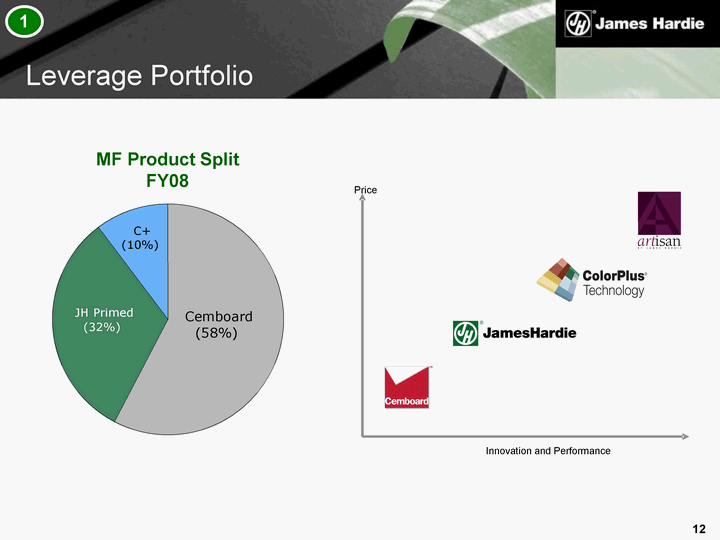
| MF Product Split FY08 Leverage Portfolio 1 Price Innovation and Performance Price Innovation and Performance |
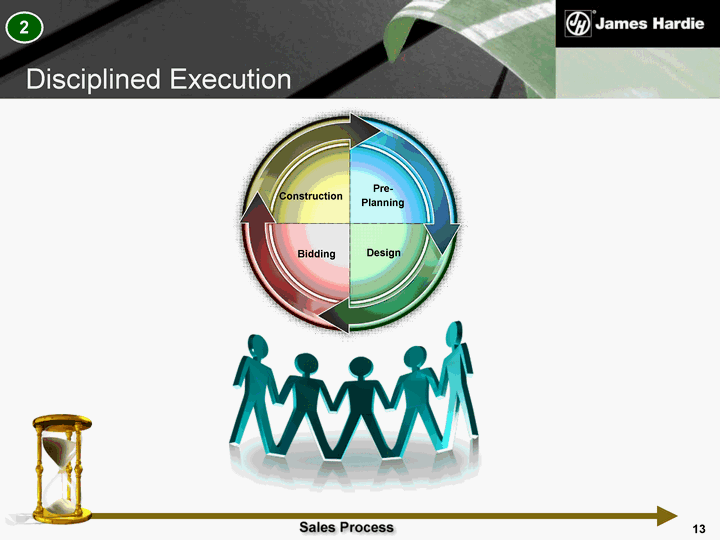
| 2 Disciplined Execution Sales Process |
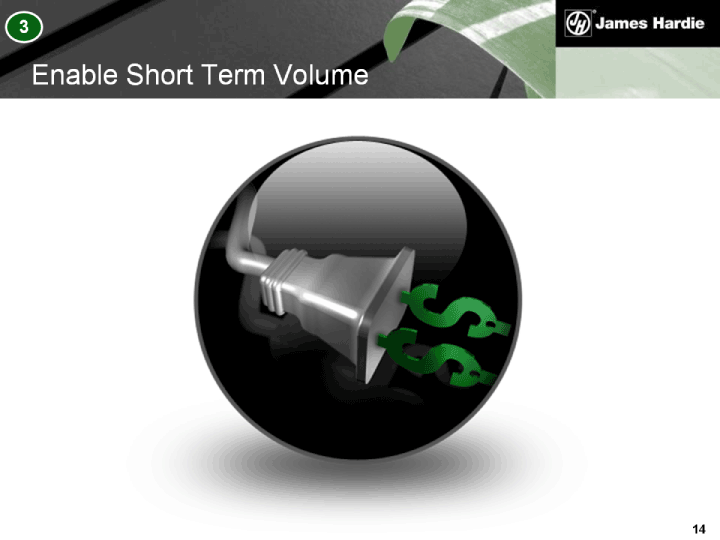
| Enable Short Term Volume 3 |
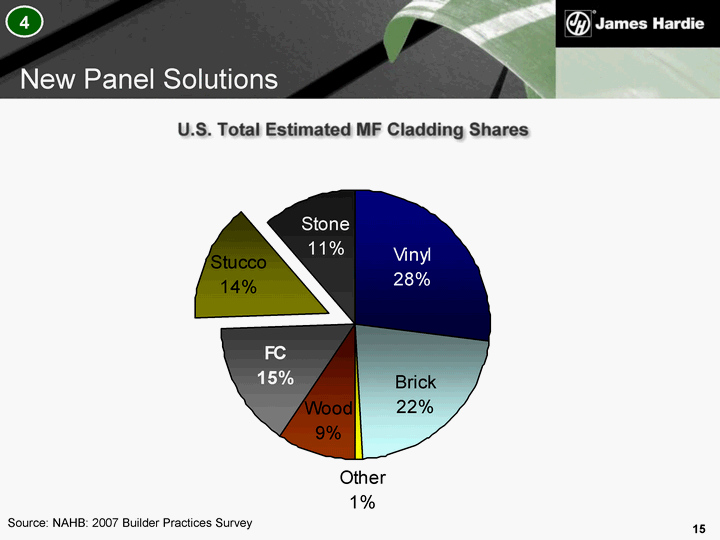
| Source: NAHB: 2007 Builder Practices Survey U.S. Total Estimated MF Cladding Shares New Panel Solutions 4 |
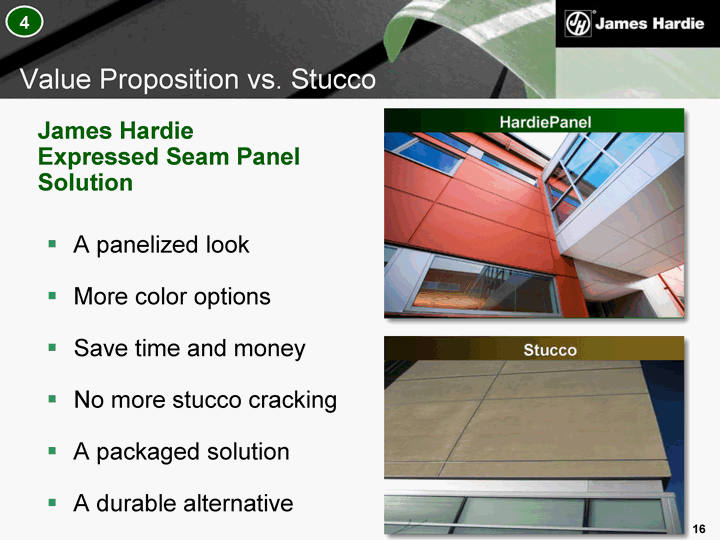
| Value Proposition vs. Stucco James Hardie Expressed Seam Panel Solution A panelized look More color options Save time and money No more stucco cracking A packaged solution A durable alternative HardiePanel Stucco 4 |
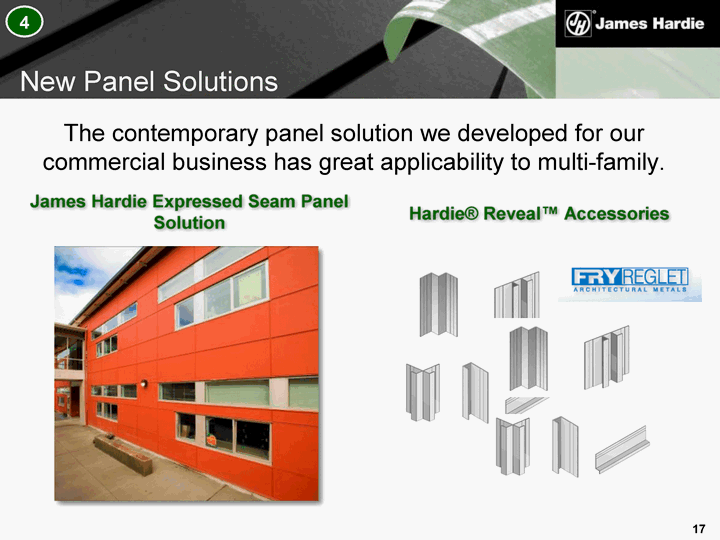
| The contemporary panel solution we developed for our commercial business has great applicability to multi-family. New Panel Solutions James Hardie Expressed Seam Panel Solution Hardie(r) Reveal(tm) Accessories 4 |
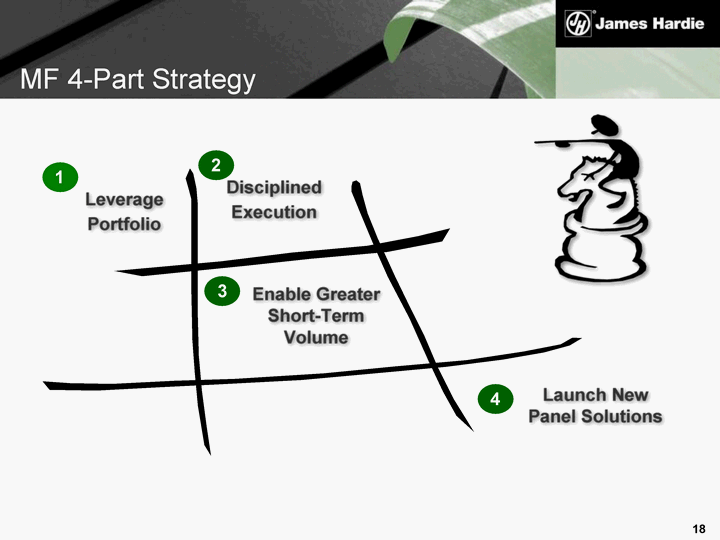
| Leverage Portfolio Disciplined Execution Enable Greater Short-Term Volume Launch New Panel Solutions MF 4-Part Strategy 1 2 3 4 |
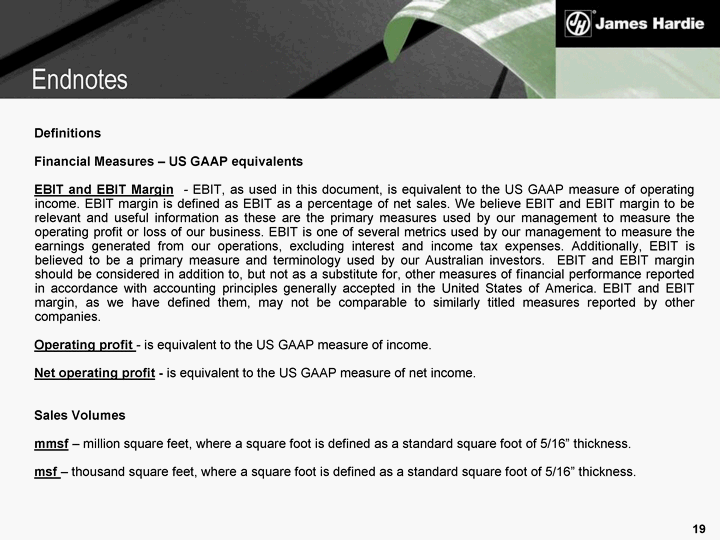
| Definitions Financial Measures - US GAAP equivalents EBIT and EBIT Margin - EBIT, as used in this document, is equivalent to the US GAAP measure of operating income. EBIT margin is defined as EBIT as a percentage of net sales. We believe EBIT and EBIT margin to be relevant and useful information as these are the primary measures used by our management to measure the operating profit or loss of our business. EBIT is one of several metrics used by our management to measure the earnings generated from our operations, excluding interest and income tax expenses. Additionally, EBIT is believed to be a primary measure and terminology used by our Australian investors. EBIT and EBIT margin should be considered in addition to, but not as a substitute for, other measures of financial performance reported in accordance with accounting principles generally accepted in the United States of America. EBIT and EBIT margin, as we have defined them, may not be comparable to similarly titled measures reported by other companies. Operating profit - is equivalent to the US GAAP measure of income. Net operating profit - is equivalent to the US GAAP measure of net income. Sales Volumes mmsf - million square feet, where a square foot is defined as a standard square foot of 5/16" thickness. msf - thousand square feet, where a square foot is defined as a standard square foot of 5/16" thickness. Endnotes |
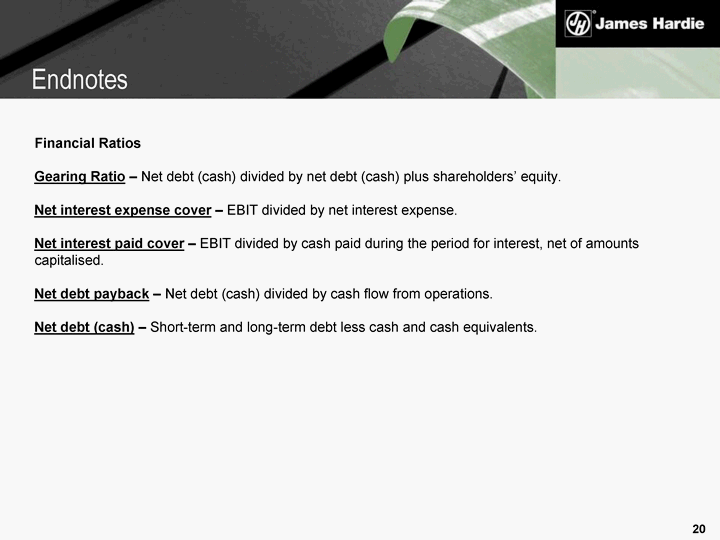
| Financial Ratios Gearing Ratio - Net debt (cash) divided by net debt (cash) plus shareholders' equity. Net interest expense cover - EBIT divided by net interest expense. Net interest paid cover - EBIT divided by cash paid during the period for interest, net of amounts capitalised. Net debt payback - Net debt (cash) divided by cash flow from operations. Net debt (cash) - Short-term and long-term debt less cash and cash equivalents. Endnotes |